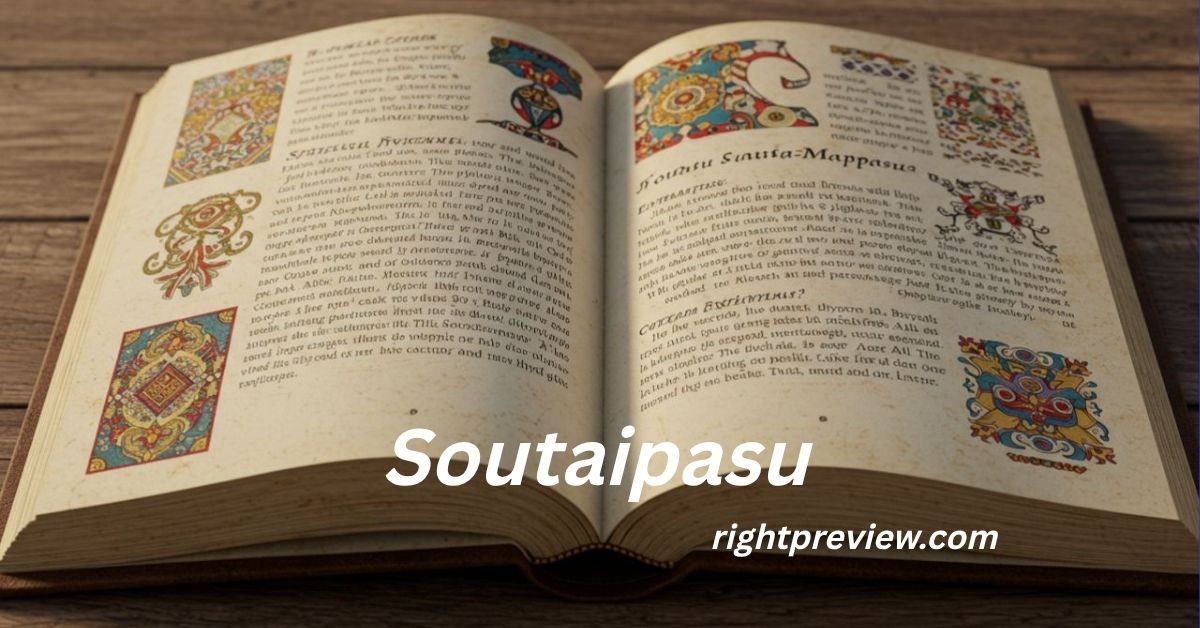Bardoek is not just a term or material; it embodies a rich blend of culture, history, and exceptional craftsmanship. While the word itself may not immediately resonate with many, it is gaining recognition in certain circles, particularly for its unique characteristics that draw on centuries of tradition and expertise. In this article, we will delve deep into what Bardoek is, its historical significance, how it is crafted, and its growing importance in the modern world.
What is Bardoek?
At its core, Bardoek represents an intricate fusion of various cultural elements and traditional craftsmanship. Though it may not be widely known in mainstream circles, those familiar with its essence understand its significance. Often linked to specific regions, Bardoek can be seen in the form of textiles, materials, or even design techniques. The term itself evokes images of traditional art forms, weaving techniques, and designs that are both functional and symbolic.
Bardoek is more than a material; it is a representation of the craftsmanship passed down through generations, imbued with cultural narratives and historical contexts. Over time, this term has evolved, encompassing new meanings and uses while retaining its core association with skill and artistry.
The Historical Origins of Bardoek
To understand Bardoek in its entirety, we must first explore its historical roots. The origins of Bardoek trace back to regions where craftsmanship and cultural heritage were deeply intertwined. From early artisans to modern-day innovators, Bardoek represents a legacy that continues to influence contemporary creations.

In many cultures, Bardoek has served as a vital element in both daily life and ceremonial practices. Whether used for clothing, decoration, or ritualistic purposes, the materials and designs associated with Bardoek were not simply functional. They carried with them stories, histories, and symbols that conveyed cultural identities and values.
For centuries, artisans have honed their skills, creating intricate designs that reflect the deep connection between material and meaning. These ancient techniques have been passed down, evolving into the Bardoek seen today. Whether through weaving, embroidery, or other methods, each piece tells a story of time, place, and culture.
Also Read: Dandork63: Unveiling the Unique Online Identity
Crafting Bardoek: The Art of Weaving Tradition and Innovation
One of the defining features of Bardoek is its craftsmanship. The art of creating Bardoek involves a meticulous process of combining materials, designs, and techniques that have been perfected over generations. This process is both an art form and a science, requiring deep knowledge of textures, patterns, and cultural symbolism.
Crafting Bardoek involves not only technical skill but also an understanding of the history and traditions associated with it. For example, when working with textiles, artisans must be familiar with the specific fibers, dyes, and weaving methods that characterize Bardoek. These materials, sourced from nature or local producers, are carefully selected for their durability, texture, and aesthetic appeal.
The traditional methods of crafting Bardoek are often slow and labor-intensive, requiring patience and precision. However, this process produces works of art that are both visually stunning and functional. Each item crafted from Bardoek is a testament to the mastery of its creator and the rich heritage that underpins it.
The Cultural Significance of Bardoek
Bardoek holds immense cultural significance, representing more than just craftsmanship. In many cultures, it is a symbol of identity, tradition, and community. Whether used in clothing, home decor, or sacred objects, Bardoek plays a central role in defining cultural aesthetics and practices.
For example, in certain regions, the use of Bardoek is linked to social status, ceremonies, and rites of passage. In some cultures, the intricate patterns and designs found in Bardoek textiles or artifacts are seen as representations of ancestral connections, spiritual beliefs, or key life events. These items are often passed down through generations, preserving a tangible connection to the past.
In modern times, Bardoek continues to be valued for its cultural importance, even as it adapts to new contexts. Designers and artists worldwide are incorporating Bardoek techniques and materials into contemporary fashion, art, and home decor. By doing so, they honor the tradition while giving it a fresh and innovative twist.
Bardoek in the Modern World: A Bridge Between Tradition and Innovation
While rooted in history and culture, Bardoek is not a relic of the past. It is a living tradition that continues to evolve in the modern world. Artists and designers are reinterpreting Bardoek in innovative ways, integrating it into new contexts and mediums while maintaining its essence.
Also Read: Help Guides JalBiteHealth: A Comprehensive Overview for Improved Health Understanding
In the world of fashion, Bardoek-inspired designs are making waves. Contemporary designers are incorporating traditional Bardoek weaving techniques into modern garments, creating clothing that blends the old with the new. These garments often feature intricate patterns, rich textures, and bold colors, all hallmarks of Bardoek’s unique aesthetic.
Similarly, Bardoek is being used in interior design and home decor. Designers are taking the traditional elements of Bardoek and infusing them into modern living spaces. Whether through textiles, artwork, or furniture, Bardoek adds a layer of cultural depth and sophistication to contemporary interiors.
Bardoek is also finding its way into the world of sustainable fashion and eco-friendly design. As interest in sustainable practices grows, many artisans and designers are returning to traditional methods of production, which are often more environmentally friendly and socially responsible. By embracing Bardoek, these designers are not only preserving cultural heritage but also contributing to a more sustainable future.
The Global Appeal of Bardoek
Though Bardoek has deep roots in specific cultural traditions, its appeal extends far beyond these borders. People around the world are increasingly drawn to the craftsmanship, beauty, and cultural significance of Bardoek.
One reason for its global appeal is the growing interest in unique, handmade, and ethically produced goods. In a world where mass-produced, fast fashion dominates, consumers are seeking out products that tell a story and reflect their values. Bardoek, with its rich history and artisanal craftsmanship, fits perfectly into this desire for authenticity and meaning.
Additionally, the rise of global trade and the internet has made it easier for consumers to access Bardoek-inspired products from across the globe. Whether through online marketplaces or boutique stores, people everywhere are discovering and embracing the beauty of Bardoek. As a result, the cultural exchange fostered by this global interest is helping to keep Bardoek alive and thriving in the modern world.
Bardoek and Its Future: Preservation and Innovation
As Bardoek continues to gain recognition, it faces both opportunities and challenges. On one hand, its cultural and historical significance ensures its continued relevance, with new generations of artisans and designers keeping the tradition alive. On the other hand, the rise of digital technologies and changing consumer preferences pose challenges to the preservation of traditional techniques and the authenticity of Bardoek.
To address these challenges, efforts are being made to document and protect the knowledge surrounding Bardoek. Museums, cultural institutions, and educational programs are working to ensure that the craftsmanship and cultural significance of Bardoek are passed down to future generations. Additionally, organizations are exploring ways to combine modern technology with traditional techniques to create a sustainable future for Bardoek.
Also Read: AVStarNews Number: Everything You Need to Know
FAQs About Bardoek
What is Bardoek made of?
Bardoek can be made from various materials depending on the region and tradition. It is often crafted from natural fibers such as wool, cotton, or silk, which are carefully woven or embroidered to create intricate patterns and designs.
How is Bardoek different from other materials?
Bardoek stands out due to its deep cultural significance and craftsmanship. Unlike mass-produced materials, Bardoek is handcrafted with great attention to detail, often using traditional techniques that have been passed down through generations.
Where can I buy Bardoek products?
Bardoek-inspired products can be found in boutiques, online marketplaces, and artisan shops that specialize in handmade or culturally significant items. Many designers are now incorporating Bardoek elements into their collections, making it easier to find modern interpretations of this timeless tradition.
Can Bardoek be used in modern fashion?
Yes, Bardoek is being reinterpreted in contemporary fashion, with designers incorporating traditional weaving techniques and materials into modern clothing and accessories. These designs often blend the old with the new, creating unique and stylish pieces.
Why is Bardoek important?
Bardoek is important because it represents a link to cultural heritage, traditional craftsmanship, and history. It is a living tradition that continues to influence modern design, art, and fashion, offering a unique way to connect with the past while embracing the future.
Conclusion
Bardoek is more than just a material; it is a rich blend of culture, history, and craftsmanship that continues to resonate in the modern world. By embracing both traditional techniques and innovative design, Bardoek remains a vital force in shaping contemporary fashion, art, and culture. As it evolves, Bardoek serves as a reminder of the importance of preserving cultural heritage while adapting to the needs and desires of a changing world.




